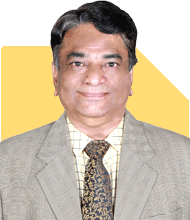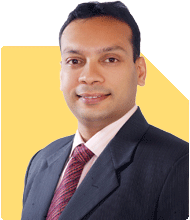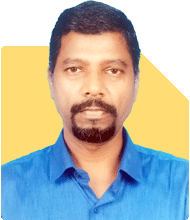Maxim Emmanuel | Answer |Ask -Follow
Soft Skills Trainer - Answered on May 18, 2024
An alumnus of the Xavier Institute of Management and Research, Mumbai, Maxim has over 30 years of experience in training young professionals and corporate organisations on how to improve soft skills and build interpersonal relationships through effective communication.
He also works with students and job aspirants offering career guidance, preparing them for job interviews and group discussions and teaching them how to make effective presentations.... more

मैंने अपनी ग्रेजुएशन पूरी कर ली है और 2026 में यूपीएससी परीक्षा देना चाहता हूँ। मैं पोस्ट ग्रेजुएशन नहीं कर रहा हूँ और इसके बजाय मैंने इस समय को पूरी तरह से तैयारी के लिए देने का फैसला किया है। क्या इन वर्षों में ग्रेजुएशन न करने से मेरी चयन प्रक्रिया में कोई नुकसान होगा?
हालांकि, चयन प्रक्रिया के दौरान किसी भी अतिरिक्त योग्यता को एक लाभ के रूप में माना जाता है।
मेरा सुझाव है कि केवल यूपीएससी पर निर्भर न रहें, एक प्लान बी भी रखें!
आप नीचे ऐसेही प्रश्न और उत्तर देखना पसंद कर सकते हैं
Krishna Kumar | Answer |Ask -Follow
Workplace Expert - Answered on Mar 24, 2024
Maxim Emmanuel | Answer |Ask -Follow
Soft Skills Trainer - Answered on Jul 04, 2024
Parthiban T R | Answer |Ask -Follow
Career Counsellor - Answered on Jul 01, 2024
Ravi Mittal |608 Answers |Ask -Follow
Dating, Relationships Expert - Answered on Jun 30, 2025
Ravi Mittal |608 Answers |Ask -Follow
Dating, Relationships Expert - Answered on Jun 30, 2025
Ravi Mittal |608 Answers |Ask -Follow
Dating, Relationships Expert - Answered on Jun 30, 2025
Mihir Tanna |1064 Answers |Ask -Follow
Tax Expert - Answered on Jun 30, 2025
Radheshyam Zanwar |4407 Answers |Ask -Follow
MHT-CET, IIT-JEE, NEET-UG Expert - Answered on Jun 30, 2025
Nayagam P P |7547 Answers |Ask -Follow
Career Counsellor - Answered on Jun 30, 2025
Nayagam P P |7547 Answers |Ask -Follow
Career Counsellor - Answered on Jun 30, 2025
Radheshyam Zanwar |4407 Answers |Ask -Follow
MHT-CET, IIT-JEE, NEET-UG Expert - Answered on Jun 30, 2025
Nayagam P P |7547 Answers |Ask -Follow
Career Counsellor - Answered on Jun 30, 2025

'करियर | पैसा | स्वास्थ्य | संबंध' के बारे में अधिक जानने के लिए RediffGURUS को फॉलो करें।
Radheshyam Zanwar |4407 Answers |Ask -Follow
MHT-CET, IIT-JEE, NEET-UG Expert - Answered on Jun 30, 2025























